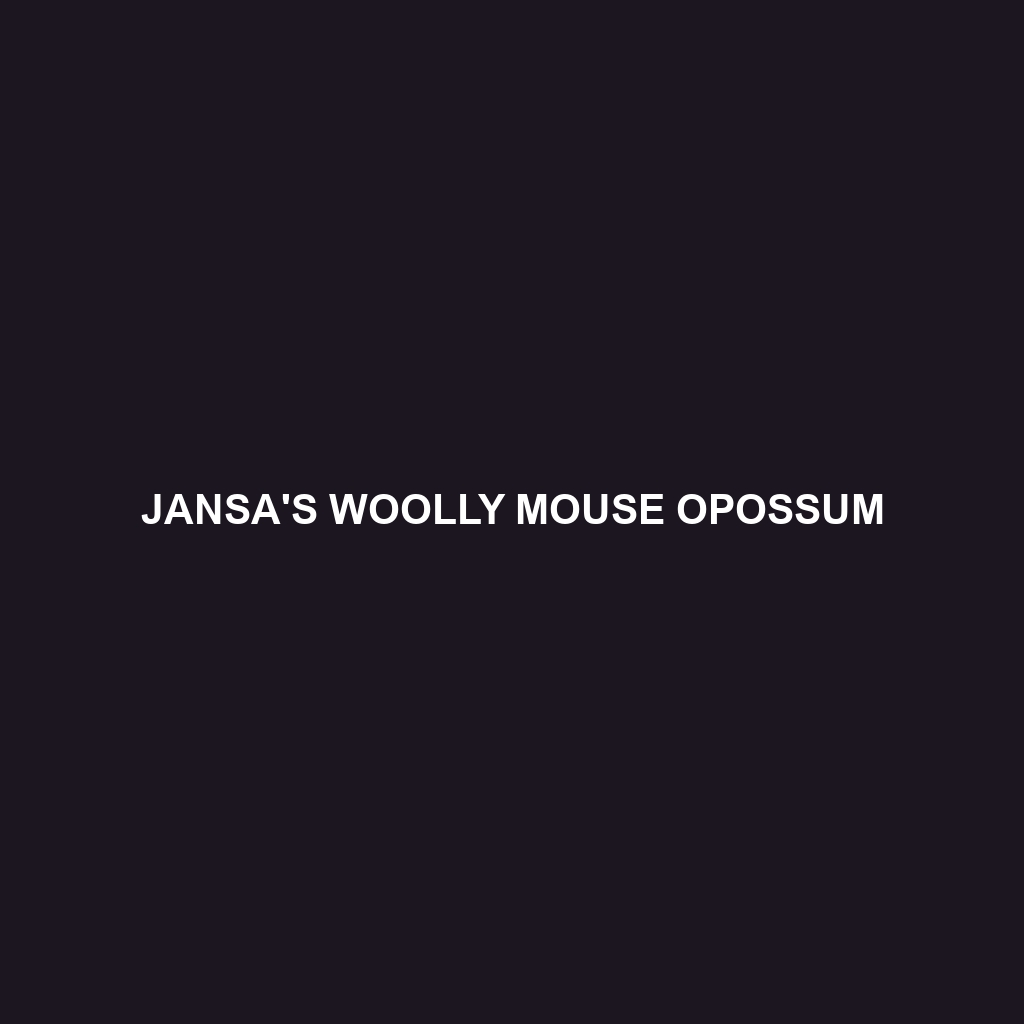The Jansa’s Woolly Mouse Opossum (Marmosa jansae) is a fascinating and elusive marsupial native to the rainforests of South America. Known for its small size and woolly appearance, this nocturnal creature has adapted remarkably well to its arboreal lifestyle. With a keen sense of survival and a host of unique physical and behavioral traits, the Jansa’s Woolly Mouse Opossum plays an important role in its ecosystem.
Physical Characteristics
Size: The Jansa’s Woolly Mouse Opossum is a small marsupial, typically weighing between 20 to 40 grams. Its body length ranges from 10 to 15 centimeters, with a tail that can be as long as its body or slightly longer.
Coloration: This opossum has a soft, woolly coat that varies from grayish-brown to reddish-brown, providing excellent camouflage in the forest canopy. Its underbelly is usually a lighter, cream or white color.
Special Features: One of the most distinguishing features of this species is its prehensile tail, which is adapted for grasping branches and aiding in arboreal navigation. The opossum also has large, dark eyes that enhance its night vision, and sharp claws that help it climb.
Behaviors
Social Interactions: Jansa’s Woolly Mouse Opossum is primarily a solitary animal, coming together only for mating purposes. They are generally nocturnal, spending the day hidden in nests made of leaves or in tree hollows.
Feeding Habits: An omnivorous species, this opossum’s diet includes fruits, insects, small vertebrates, and occasionally nectar. They play a crucial role in seed dispersal and pest control within their habitat.
Ecological Roles: This small marsupial is an important part of the food web. It serves as prey for various larger predators and contributes to the health of the forest by controlling insect populations and aiding in plant reproduction through seed dispersal.
Habitats
Natural Habitat: Jansa’s Woolly Mouse Opossum is predominantly found in tropical rainforests, especially in the dense, humid lowlands of South America, including parts of Brazil, Peru, and Bolivia. They prefer areas with abundant tree cover and a rich understory, providing ample food and shelter.
Adaptations: To thrive in its arboreal environment, the opossum has developed several adaptations, such as a prehensile tail for balance and climbing, and sharp claws for gripping bark and branches. Its nocturnal nature helps it avoid daytime predators, while its keen senses help it locate food in the dark.
Conservation Status
The conservation status of the Jansa’s Woolly Mouse Opossum is currently not well-documented, but like many rainforest species, it could be threatened by habitat loss due to deforestation and human encroachment. Conservation efforts aimed at preserving rainforest habitats are crucial for the survival of this species.
Fun Facts
Marsupial Pouch: Unlike many other marsupials, the Jansa’s Woolly Mouse Opossum does not have a well-developed pouch. Instead, the mother carries her young on her back.
Survival Skills: This opossum can enter a state of torpor to conserve energy during times of food scarcity or extreme weather conditions.
Agile Climbers: Thanks to their prehensile tails and sharp claws, these opossums are incredibly agile climbers, capable of navigating the complex structure of the rainforest canopy with ease.
In , the Jansa’s Woolly Mouse Opossum is a remarkable example of adaptability and resilience in the wild. Its unique physical and behavioral traits enable it to thrive in the complex ecosystem of the South American rainforests, making it an essential species for maintaining ecological balance.
